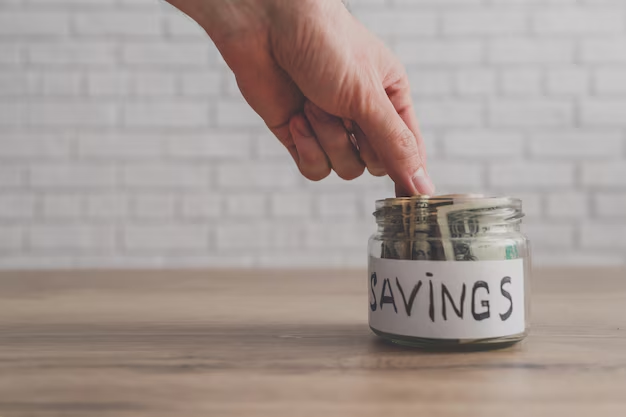Mastering Your Finances: Effective Strategies for Paying Down Credit Card Debt
Credit card debt can feel like an ever-present burden, silently accumulating interest and challenging your financial goals. Whether it’s from unexpected expenses or overspending during shopping sprees, many find themselves looking for effective strategies to manage and pay down credit card debt. In this guide, we'll explore practical, actionable steps to help you reduce and eventually eliminate your credit card debt, empowering you to regain control over your financial future.
Understanding the Weight of Credit Card Debt
It's crucial to understand what makes credit card debt particularly burdensome. High interest rates can have a snowball effect, significantly increasing the amount you owe over time. Unlike secured debts, credit cards often have higher interest rates, meaning a larger portion of your monthly payment can go towards interest rather than reducing the principal. This reality underscores the importance of addressing credit card debt promptly and efficiently.
The Impact of Credit Card Debt on Financial Health
- Reduced Savings Potential: Funds directed toward credit card payments cannot be saved or invested elsewhere.
- Credit Score Implications: High levels of credit card debt can negatively affect your credit utilization ratio, impacting your creditworthiness.
- Limited Financial Flexibility: Carrying high debt limits your ability to respond to emergencies or opportunities.
Steps to Pay Down Credit Card Debt
1. Assess Your Financial Situation
Begin by taking a comprehensive look at your financial landscape. Understand the total amount you owe, the interest rates attached, and your monthly income and expenses. This awareness will be the foundation of your debt repayment plan.
2. Create a Budget 📊
A budget is your roadmap for financial stability. Here's how to set one up:
- List all Sources of Income: Account for all regular income streams.
- Track Expenses: Note down every expense, distinguishing between necessities (e.g., rent, utilities) and discretionary spending (e.g., dining out, entertainment).
- Identify Saving Opportunities: Locate areas where you can reduce costs and allocate those savings toward debt repayment.
3. Choose a Debt Repayment Strategy
The Snowball Method
Focus on paying off the smallest debt first, then move on to the next smallest. This method provides psychological wins, motivating momentum as debts are cleared.
The Avalanche Method
Alternatively, attack the highest interest rate debt first, thereby reducing the cost of your debt over time. While it might take longer to see the first debt cleared, this method can save money in interest payments.
4. Negotiate with Creditors
Don't be afraid to approach your credit card issuers. They might be willing to reduce your interest rate or offer a temporary hardship program, especially if you have a good payment history.
5. Consider a Balance Transfer
For consumers with good credit, a balance transfer to a card with a lower interest rate or a promotional 0% APR can provide breathing room while you focus on paying down the principal.
6. Increase Your Monthly Payments
Whenever possible, pay more than the minimum required payment. This approach reduces the principal more quickly and decreases the amount of interest accrued.
7. Find Additional Income Streams
Explore opportunities for additional income, whether through freelance work, a part-time job, or selling unneeded items. Every extra dollar can support your debt repayment goals.
8. Automate Payments
Set up automatic payments to ensure you never miss a due date. Timeliness can prevent additional charges and contribute positively to your credit score.
Beyond Repayment: Maintaining Financial Health
Building an Emergency Fund
One unexpected expense can lead to increased debt. An emergency fund acts as a financial buffer, providing flexibility and security in times of need.
Understanding Credit Utilization
Strive to keep your credit utilization ratio—how much credit you're using relative to your available credit—below 30%. This habitually healthy utilization can boost your credit score over time.
Seeking Professional Guidance
There are numerous consumer credit counseling services that provide advice and structured repayment plans. These services can offer personalized insight and structure for individuals feeling overwhelmed.
Frequently Asked Questions
How Long Will It Take to Pay Off My Debt?
This timeframe varies based on the total debt, interest rates, and the amount you can afford to pay each month. Utilizing debt calculators can provide personalized insights into your debt payoff timeline.
Is Debt Consolidation a Good Option?
For some, consolidating debts into a single loan with a lower interest rate can simplify payments and reduce interest costs, but it depends on your financial behavior and if you can secure a loan with favorable terms.
Should I Close Credit Card Accounts I’ve Paid Off?
While it's gratifying to close a paid-off card, doing so might impact your credit score by reducing your available credit. Consider keeping accounts open (without carrying a balance) to maintain a favorable credit utilization rate.
Quick Recap: Key Takeaways 📝
- Budget Wisely: A clear, realistic budget illuminates saving opportunities.
- Choose Your Strategy: Snowball for quick wins, avalanche for interest reductions.
- Communicate with Creditors: Express any financial hardships—negotiation is often possible.
- Explore Additional Income: Every extra dollar can expedite your goal.
- Prioritize Emergency Savings: An emergency fund prevents regression into debt.
- Leverage Available Tools: Balance transfers, debt consolidation, and professional advice can be potent tools in your strategy.
By understanding your debt and taking deliberate, informed steps, paying down credit card debt becomes a manageable goal. As you journey toward financial freedom, remember to celebrate each milestone, however small, as these victories pave the road to a debt-free life.

Related Topics
- a Credit Card
- Am Eagle Credit Card
- Are Airline Credit Cards Worth It
- Are Credit Card Points Taxable
- Are Credit Card Rewards Taxable
- Can a Credit Card Company Sue You
- Can a Debit Card Be Used As a Credit Card
- Can a Money Order Be Paid With a Credit Card
- Can a Secured Credit Card Build Credit
- Can Credit Card Companies Garnish Your Wages